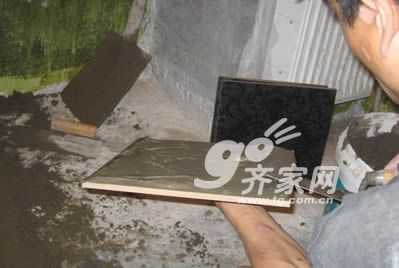There are various methods for laying ceramic tiles. The most important ones are dry and wet shops. It may be that many people don't understand the difference between the two. Let's take a look with Xiao Bian:

Cano tile
Wet shop:
The tiled wet shop is a method commonly used by many home owners to tile, and wall tiles are all wet. The difference between this process and the dry shop method is to replace one to three dry cement mortars with ordinary water and cement mortar.
Wet-laid tile floors may produce hollow drums and air bubbles, affecting the service life of floor tiles, but the wet-laid floor thickness will be thinner than the dry paving, saving space, and the wet-laying method is easy to operate and the price is lower, like the kitchen bathroom. For small areas, floor tiles are generally wet.
How to deal with the angle of laying ceramic tile
The tiled walls in the home have been used for a long time. The problem areas are often located at the corners of the sun. Many times the porcelain is knocked out, or two tiles at the outer corners of the tiles are cracked to show unsightly black seams. These are tiled tiles. When it was not handled properly.
In the case of ceramic tiles, the traditional method is to use two tiles that are ground at an angle of 45°, and then tile the tiles diagonally. The most likely problem at this time is that the corner of the tiles is empty, that is, the cement is not filled. , In the future, the corner of this tile will break easily. In addition, some bricklayers do not pass the technology. The chamfer is not regular, and it will expand slightly afterwards. It is easy to open seams here.
Therefore, if the home bricklayer technology is general, in the corner of Yangjiao, it is better to choose to use the Yangjiao line, so that the construction difficulty will be much lower, and without chamfering, the worker's fee will be low, and the price of the Yangjiao line is very cheap, so the overall cost Will fall.
Dry shop:
Generally, the wall tiles are wet-laid, and particularly large-size floor tiles are dry-fabricated, such as 800×800 floor tiles, or large-sized stone paving floors, all of which can be dry-laid.
The thickness of dry shop is large, and the thickness of wet shop is small.
The specific use of dry shop or wet shop can be judged by the home tile master, and generally his judgment is correct.
And dry shop and wet shop, as long as the operation is done properly, the project quality is the same.
Tiles Tiles Tiles Tiles Cement Spaces Home Improvement Kitchen Wall Tiles Bathroom Wall Tiles Bathroom Tiles Bathroom Tiles Whole Bathroom Toilet Tiles Price Kitchen Tiles